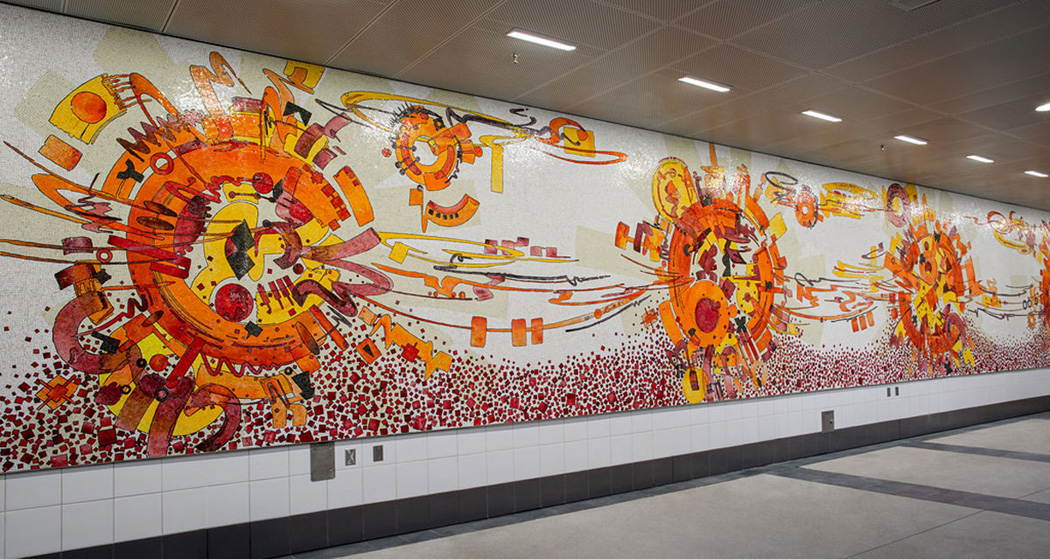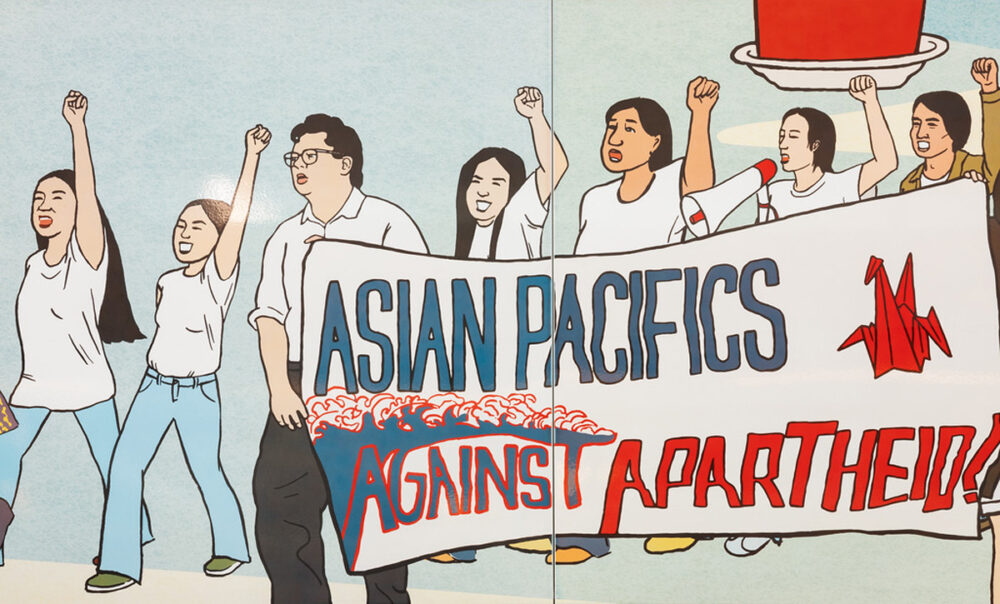With the opening of Metro’s Regional Connector on June 16, three new Downtown Los Angeles stations have site-responsive art installations by eight artists in them. The artists were carefully chosen through a multi-stage process, and their designs became integral parts of the station’s architecture—whether part of solid walls or glass panels. What I’ve found particularly interesting is that Metro Art, the transportation agency’s public art program, required a public engagement component for every project, and the artists found different ways to make those connections meaningful.
Mark Steven Greenfield’s Red Car Requiem at Historic Broadway Station pays homage to the Red Cars, the nickname for the Pacific Electric Railway system, which was an extensive mass transit system that ran throughout Southern California in the last century. In the 1920s it was the largest electric railway system in the world, covering over 1000 miles of track.
The artist himself has memories of the Red Car. “My father was in the service, and we were out of town quite a bit,” said Greenfield. “Once when we came back, the Red Car was gone. Overnight it disappeared.” This project is his way of recalling a system that provided mass transportation to millions of Angelenos, as Metro is doing today. “I’m a student of history, to me history is really important,” he added.

Mark Steven Greenfield, Red Car Requiem (detail), at Historic Broadway Station
He did his community outreach by preparing a survey sent out by the Cal State LA Alumni Association, culminating in a Zoom discussion, and now Metro has an archive of personal memories of the Red Car. His final design was abstract. “I wanted to convey the energy behind the Red Car—the vibration, sound, movement,” he asserted. The image is of a series of fragmented rosettes or wheels in red, orange and yellow, with pieces spinning off of them which runs steady on the concourse level, the longest continuous piece Metro Art has ever commissioned—148 feet long and 10 feet high. The work is a tour de force of mosaics composed of millions of tiny, hand-cut pieces of glass, and produced in Cuernavaca, Mexico, over a six-month period.
Audrey Chan’s design borrowed directly from her public engagement: for Will Power Allegory she interviewed many people connected to the area where her work is located, the Little Tokyo/Arts District station. During one Nisei Week, she held a workshop at The Japanese American Community & Cultural Center to discuss historical images and her project.

Audrey Chan’s, “Will Power Allegory,” at Little Tokyo/Arts District Station
Will Power Allegory includes 14 panels on the platform level of the station, each featuring people or a public gathering, such as the traditional Japanese Obon Festival, which happens in Little Tokyo every year, or a Gabrielino-Tongva ceremonial dance or a group of protestors. These large, brightly hued panels are made of porcelain enamel steel, translated into the durable material by an artwork fabrication company in Tumwater, Washington, that creates museum-quality work.
“It’s loosely thematic, I wanted there to be a lot of fluidity between different time periods, and people,” Chan said. “There are communities overlapping in various areas. I needed it to work as a whole piece, but then, also, as individual compositions.” Only one panel includes a central portrait, portraying Biddy Mason, the African American woman who was born a slave but became a successful entrepreneur and philanthropist in early Los Angeles.
Along the bottom of most panels is a procession of smaller figures of various cultures and dress. “That’s a way for the people in the station to connect to the artwork,” said Chan, “because everyone in the station is walking in some direction.”
Many more infrastructure projects are on the horizon. To learn more about opportunities with Metro Art, visit metro.net/art and click on Art Opportunities.


